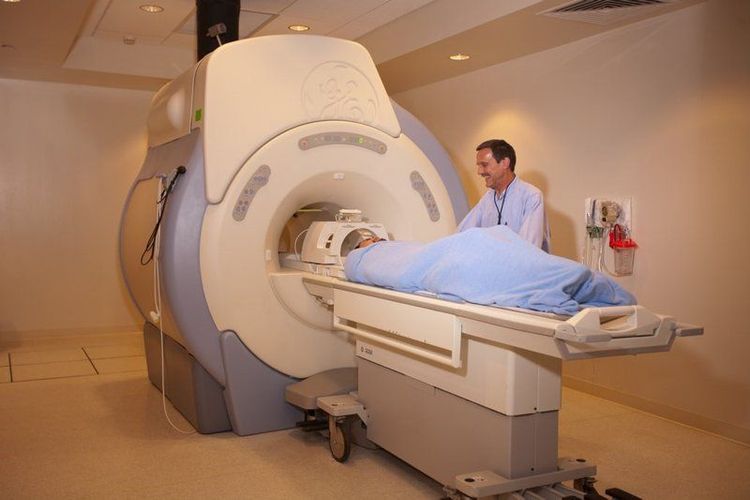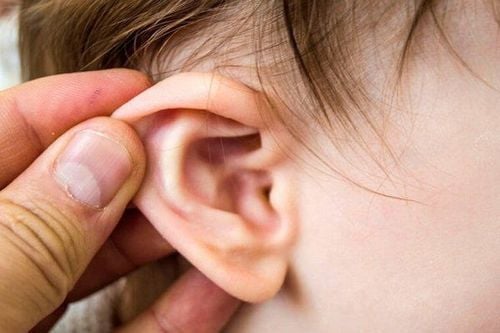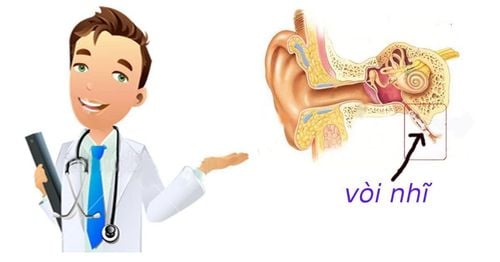This is an automatically translated article.
The article was professionally consulted by Specialist Doctor of Otolaryngology - Department of Medical Examination and Internal Medicine - Vinmec Hai Phong International Hospital.
Malignant otitis externa usually occurs when the body's immune system is weakened. It is a disease that causes severe tissue damage and can be life-threatening. So why is the outer ear canal malignant and how is it treated?
1. Malignant otitis externa is a dangerous disease
Otitis externa is a common ear-related inflammatory disease today. The disease is relatively benign and can be treated with antibiotics. However, some patients have severe inflammation of the outer ear canal, spreading to surrounding tissues such as jawbone, facial bone and becoming a very dangerous malignant form of otitis externa.
Malignant otitis externa (also known as necrotizing otitis externa or skull base osteomyelitis) is a very dangerous disease caused by certain bacteria combined with a decline in the body's immune system, The bacteria attack the surrounding bone tissue, spread along the base of the skull, and can cause paralysis of the nerves.
The cause of otitis externa is usually caused by green pus bacillus (Pseudomonas) and recently it has been discovered that methicillin-resistant Staphylococcus aureus (MRSA) is also a causative agent of malignant otitis externa.
In the pathogenesis of malignant otitis externa, the onset of the disease is caused by pathogenic bacteria (including Pseudomonas and methicillin-resistant staphylococcus aureus) causing severe inflammation of the outer ear canal, then progressing to affect other organs. surrounding soft tissue, cartilage and bone.
This process may be limited to normal or promptly treated patients. However, in immunocompromised patients such as long-term diabetes mellitus, elderly people or immunocompromised diseases, without timely diagnosis and treatment, the degree of osteomyelitis spreads along the spine. It follows the base of the skull and because it is corrosive to the surrounding tissue, it can cause cranial nerve palsies.

In which, the facial nerve (the VII nerve) is the first injured site, then the IX, X, and XI nerves, respectively. Malignant otitis externa may be unilateral or cross the midline and spread to the opposite side.
The typical symptom of the common disease is severe, persistent ear pain, located deep inside the ear and often increases at night. In addition, the ear may discharge pus with a foul odor and at the junction between the bone and cartilage of the ear canal, dead bone fragments or granulation tissue may appear.
Some patients may have conductive hearing loss and more severe facial nerve paralysis or paralysis of the IX, X, XI nerves. Malignant otitis externa is a very dangerous disease because it can be life-threatening when it spreads along the base of the skull, through the foramen mastoid to the foramen of the lateral veins and further.
2. Diagnosis of malignant otitis externa
Malignant otitis externa is a very serious disease that can be fatal if not diagnosed and treated promptly. Symptoms of the disease may include:
Yellow or green ear discharge, rotten and persistent odor; Ear pain: Deep internal pain, which increases at night or when moving the head; Decreased or complete loss of hearing An itchy sensation in the outer ear canal; The skin around the ear may swell. red; Patients are often accompanied by high fever; Signs of nerve paralysis such as facial paralysis or weakness, difficulty swallowing, loss of voice. When detecting the above signs, the patient should go to the hospital to be examined and diagnosed with malignant otitis externa in a timely manner. The doctor will examine the ear area in turn for signs of infection and note abnormalities in the head and behind the ears.
In case of a lot of ear discharge, the most important test is to take pus to culture to identify bacteria and make an antibiotic chart to help with the treatment process. In addition, a number of examination methods and tests are used to determine whether the inflammation of the outer ear canal has spread to the surrounding area, including:
Examination of the nervous system to record signs of cord paralysis cranial nerves, especially the facial nerve; Computed tomography of the brain; Resonance from the head region; Scanning; High-resolution computed tomography of the temporal bone can be of great help in diagnosis. The recorded images are areas of increased density in mastoid osteoblasts system, foci of hyperintensity (demineralization) in some locations and bone erosion; Biopsy of inflamed outer ear canal tissue to differentiate it from malignancy.

3. Treatment of malignant otitis externa
Malignant otitis externa if not treated promptly can lead to many dangerous complications. Therefore, the most important thing is still timely diagnosis and treatment. Treatment methods include:
Systemic antibiotics: Doctors often use fluoroquinolone antibiotics alone or in combination with penicillin group antibiotics. or Aminoglycosides: Fluoroquinolone antibiotics intravenously for 6 weeks (eg, Ciprofloxacin 400mg IV every 8 hours or according to the antibiogram) or in combination with semisynthetic penicillin antibiotics or Aminoglycosides in cases of Ciprofloxacin-resistant Pseudomonas ; Patients with mild otitis externa can be managed as an outpatient and closely monitored with high-dose oral fluoroquinolone antibiotics (Ciprofloxacin 750 mg every 12 hours). Topical application of a combination antibiotic and steroid (eg, ciprofloxacin/dexamethasone); Surgical removal of inflammatory and necrotic tissues. Surgery is done only when the infection is fine, in cases of severe tissue damage; Hyperbaric oxygen may be indicated, but response has not been demonstrated; Because otitis externa is malignant or begins in the background of patients with diabetes, so patients need to be closely controlled blood sugar with drugs; Make ear drops to remove granulation tissue and ear pus regularly.

4. Prevention of malignant otitis externa
Measures to prevent malignant otitis externa are as follows:
The best method to prevent malignant otitis externa is to control and thoroughly treat mild cases of otitis externa. Patients need to strictly follow the doctor's treatment, use antibiotics at the right dose and time; Strictly control blood sugar in diabetic patients to limit dangerous complications of diabetes; Patients who are immunocompromised due to HIV require continuous medication to control the viral load in the body. Take immune-boosting measures such as diet, exercise and healthy lifestyle to protect the body against harmful external agents. Malignant otitis externa if not treated promptly can lead to many dangerous complications. Therefore, early detection and treatment of the disease is very important.
Vinmec International General Hospital is a general hospital that has the function of examining and treating ENT diseases such as sinusitis, rhinitis, allergic rhinitis, chronic rhinitis, tonsillitis, and pain. throat, tinnitus, otitis externa and many other diseases. At Vinmec, we have also performed endoscopic diagnosis and treatment with modern medical methods for ear, nose and throat diseases, which not only brings high efficiency but also minimizes complications of recurrent disease. The great success is because Vinmec is always fully equipped with modern facilities, examination and treatment procedures are carried out by a team of experienced and qualified doctors that bring optimal treatment results. advantage for customers.
Please dial HOTLINE for more information or register for an appointment HERE. Download MyVinmec app to make appointments faster and to manage your bookings easily.













